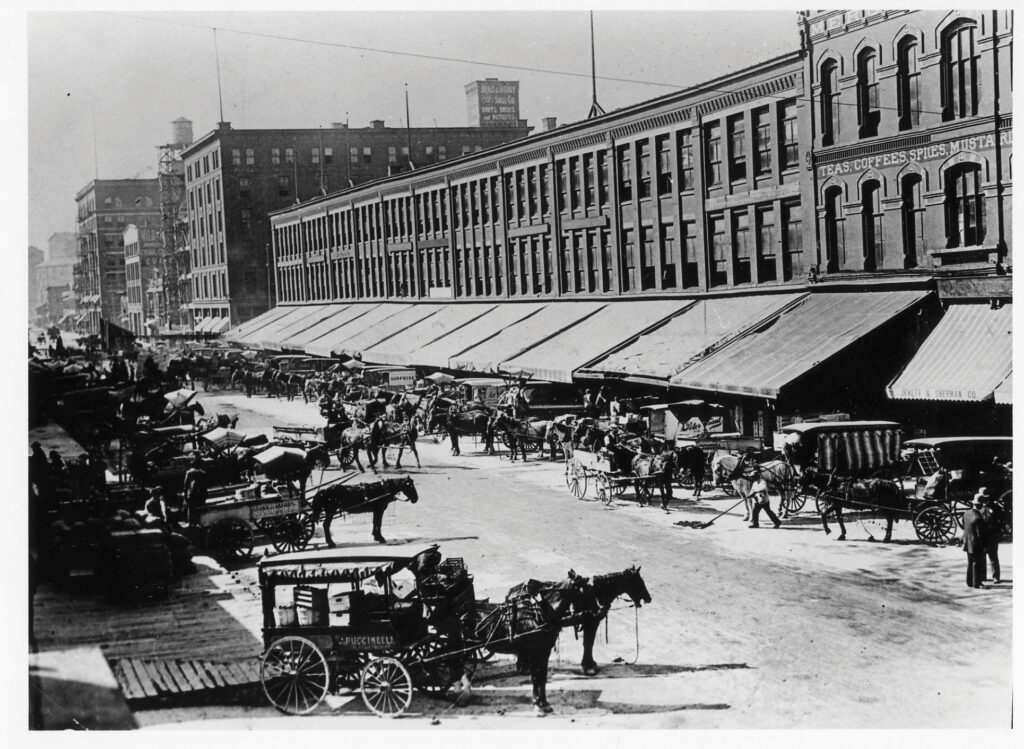
Photo courtesy of Milwaukee County Historical Society
The Grocers’ Grocery Store on North Broadway
Commission Row’s origins are much grittier, and more essential, than today’s trendy retail landscape might suggest.
BY John Gurda
It would be hard to imagine a Milwaukee building more distant from its roots than Commission Row. Dominating the 300 block of North Broadway, the complex is a centerpiece of the revitalized Third Ward today, a place where you can buy “boho-chic” women’s fashions, try on designer eyeglasses, get a Botox injection, or pay twelve bucks for a loaded Bloody Mary, all in a retro setting of sky-high ceilings and mostly red – notably, not Cream City – brick.

Get tickets now for the 2024 Home + Design Awards Event!
Commission Row’s origins are much grittier, and more essential, than today’s trendy retail landscape might suggest. For nearly a century, it was the center of Milwaukee’s wholesale produce trade, filled from curb to alley with fresh fruits and vegetables for sale to the city’s retail grocers. If your Milwaukee ancestors ever sliced a banana for breakfast, served tomatoes for lunch, or boiled potatoes for supper, their food probably came through Commission Row.
Connected to distant markets by both rail and water, the Third Ward was a natural location for wholesalers, but a disastrous 1892 fire hastened their arrival. In 1894, local entrepreneurs began to raise Commission Row on a site cleared by the flames. With up-to-date amenities like electricity, elevators and refrigerated storage, the complex drew most of the city’s grocery wholesalers from their previous quarters west of the river. The first wholesalers were primarily Germans and Yankees, but Italian and Jewish merchants were in the majority by the mid-1900s.
Pictured here in about 1900, Commission Row prospered for decades, but its days were numbered as the produce industry shifted to single-story suburban warehouses served by trucks. The Jennaro Brothers were the last to leave, pulling up stakes in the fall of 2005. With their departure, the Third Ward embraced a future without a single vegetable in sight – save for a restaurant plate.
TAKE A CLOSER LOOK
- A total of 145 horse-drawn wagons visited Broadway on a single morning in 1910.
- Oversized awnings, which remain in place today, protected perishable produce from both sun and rain.
- Commission Row’s architect was Henry Koch, whose other projects included City Hall and the Pfister Hotel.
- Jewett & Sherman wholesale house, built in 1875, was one of the few survivors of the 1892 fire.
- The horses left abundant reminders of their presence.



